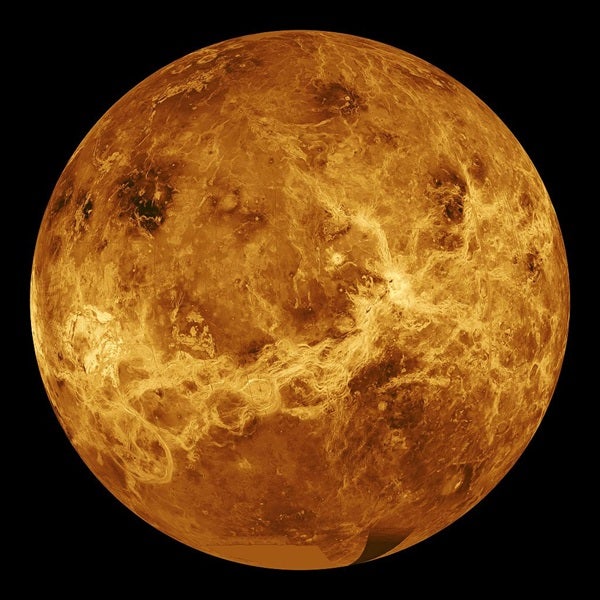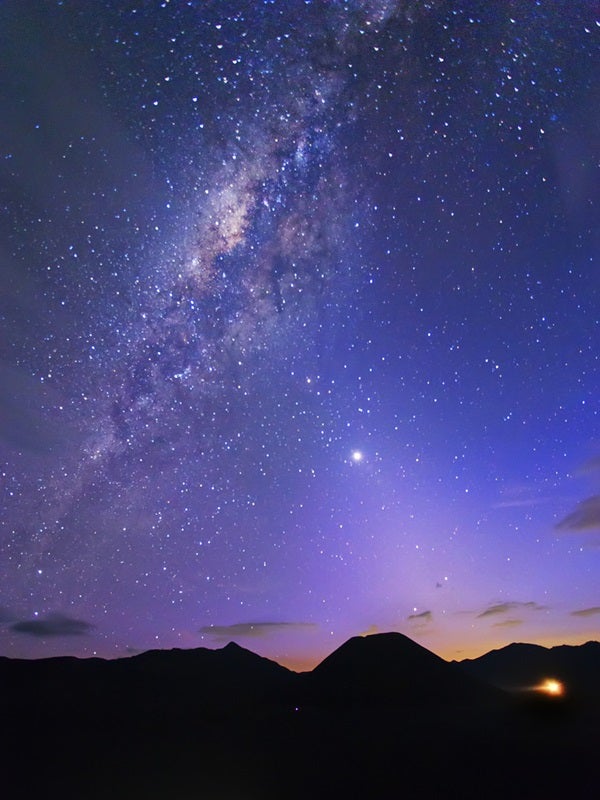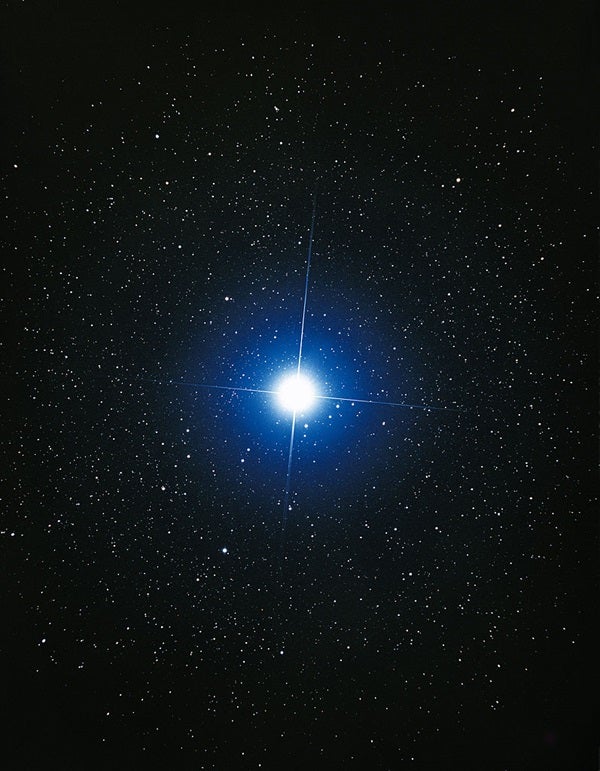Friday, March 10
Around 6 p.m. EST, the waxing gibbous Moon passes just 0.8° south of Leo the Lion’s brightest star, Regulus. In fact, observers with clear skies located in southeastern South America, the southern tip of South Africa, and Queen Maud Land will see the Moon pass in front of Regulus. By carefully observing many of these so-called occultations, astronomers can more accurately map variations (caused by mountains and valleys) at the lunar edge.
Saturday, March 11
Venus shines brilliantly in the western sky after sunset all week. At magnitude –4.5 this evening, the inner planet glows about two magnitudes brighter than the evening sky’s second-brightest point of light, Jupiter. Venus shows up easily within a half-hour after sunset and remains on view until nearly 8 p.m. local time. When viewed through a telescope, Venus appears 55″ across and 7 percent illuminated this evening. A week from now, the planet’s disk will span 58″ and show a 3-percent-lit crescent.
Sunday, March 12
Full Moon occurs at 10:54 a.m. EDT, but our satellite will look completely illuminated all night. You can find it rising in the east shortly after sunset and peaking in the south around 1:30 a.m. local daylight time. The Moon lies among the background stars of western Virgo, roughly 25° west-northwest of Jupiter.
For most people in the United States and Canada, daylight saving time begins at 2 a.m. local time this morning. Set your clocks ahead one hour.
Monday, March 13
Mars continues to put on a nice show these March evenings. It appears 20° high in the west once twilight fades to darkness and doesn’t set until after 10 p.m. local daylight time. The magnitude 1.4 Red Planet lies among the background stars of Aries the Ram. Unfortunately, Mars shows no detail on its 4″-diameter disk when viewed through a telescope.
Tuesday, March 14
By 10 p.m. local daylight time this evening, you can find Jupiter rising in the eastern sky in the company of a waning gibbous Moon. The two wheel across the sky in tandem tonight, reaching their peak altitudes in the south during the wee hours. The giant planet shines at magnitude –2.4 this week against the backdrop of central Virgo, some 5° north-northwest of that constellation’s brightest star, 1st-magnitude Spica. Even a small telescope reveals Jupiter’s 43″-diameter disk and four bright moons.
As midnight approaches, look to the east for the bright star Arcturus. At magnitude 0.0, it is the second-brightest star visible from mid-northern latitudes. If you scan about 20° to the left and a little below this luminary, you should see a conspicuous semicircle of stars — the constellation Corona Borealis the Northern Crown. It’s the most prominent group of stars having a shape reminiscent of a circle, and it makes a fitting target for Pi Day. (For you non-geeks, Pi Day is 3/14 because the first three digits of the mathematical constant pi are 3.14. Pi is the ratio of a circle’s circumference to its diameter, so today we celebrate all things circular.)
Wednesday, March 15
March evenings offer an excellent chance to see the zodiacal light. From the Northern Hemisphere, late winter and early spring are great times to observe this elusive glow after sunset. It appears slightly fainter than the Milky Way, so you’ll need a clear moonless sky and an observing site located far from the city. With the waning gibbous Moon now exiting the early evening sky, prime viewing conditions will extend from now through March 28. Look for the cone-shaped glow, which has a broad base and points nearly straight up from the western horizon, after the last vestiges of twilight have faded away.
Thursday, March 16
If you head outside after darkness falls tonight and look due west, you’ll see the stars of Taurus the Bull nearly halfway to the zenith. The tip of the V-shaped Hyades star cluster, which forms the Bull’s face, points straight toward the horizon. To the right of the Hyades lies the spectacular Pleiades star cluster (M45) and to the left are the glittering jewels that form Orion the Hunter’s shape.
Target Jupiter through a telescope tonight and you’ll think the planet has a “black eye.” The dark shadow of the solar system’s largest moon, Ganymede, transits the gas giant’s cloud tops starting at 2:36 a.m. EDT tomorrow morning (11:36 p.m. PDT this evening). The moon itself starts to transit the planet’s disk at 4:53 a.m. EDT, just 12 minutes before the shadow lifts back into space.
Friday, March 17
The variable star Algol in Perseus reaches minimum brightness at 9:14 p.m. EDT, when it shines at magnitude 3.4. If you start viewing as soon as darkness falls, you can watch it more than triple in brightness (to magnitude 2.1) over the course of about five hours. This eclipsing binary star runs through a cycle from minimum to maximum and back every 2.87 days. Algol lies more than halfway to the zenith in the western sky after sunset and sinks low in the northwest after midnight.
Saturday, March 18
Saturn rises around 2:30 a.m. local daylight time and climbs some 25° high in the south-southeast by the time morning twilight begins. The ringed planet shines at magnitude 0.5 and lies in the northwestern corner of Sagittarius the Archer. When viewed through a telescope, Saturn shows a 17″-diameter disk surrounded by a stunning ring system that spans 38″ and tilts 26° to our line of sight.
The Moon reaches apogee, the farthest point in its orbit around Earth, at 1:25 p.m. EDT. It then lies 251,438 miles (404,650 kilometers) from Earth’s center.
Sunday, March 19
This is a good week to look for Sirius in the evening sky. As darkness falls at mid-northern latitudes, the night sky’s brightest star (at magnitude –1.5) appears in the south and about one-third of the way from the horizon to the zenith. (The farther south you live, the higher it appears.) Sirius remains a spectacle until it sets shortly after midnight local daylight time. If you point binoculars at this luminary, look for the pretty star cluster M41 in the same field of view, just 4° below the star.












